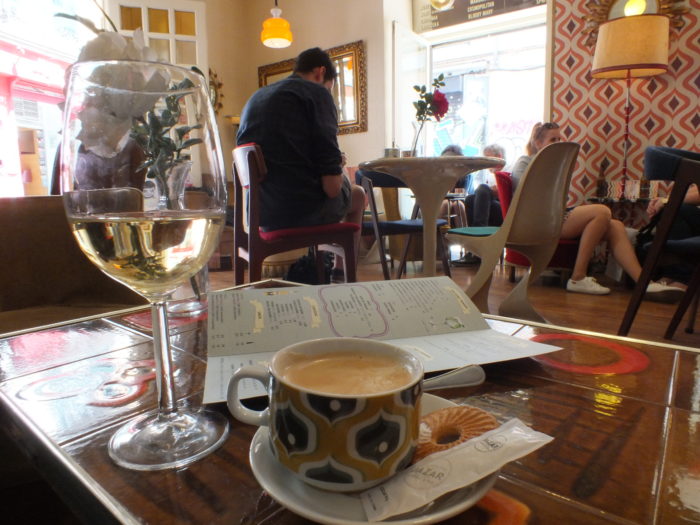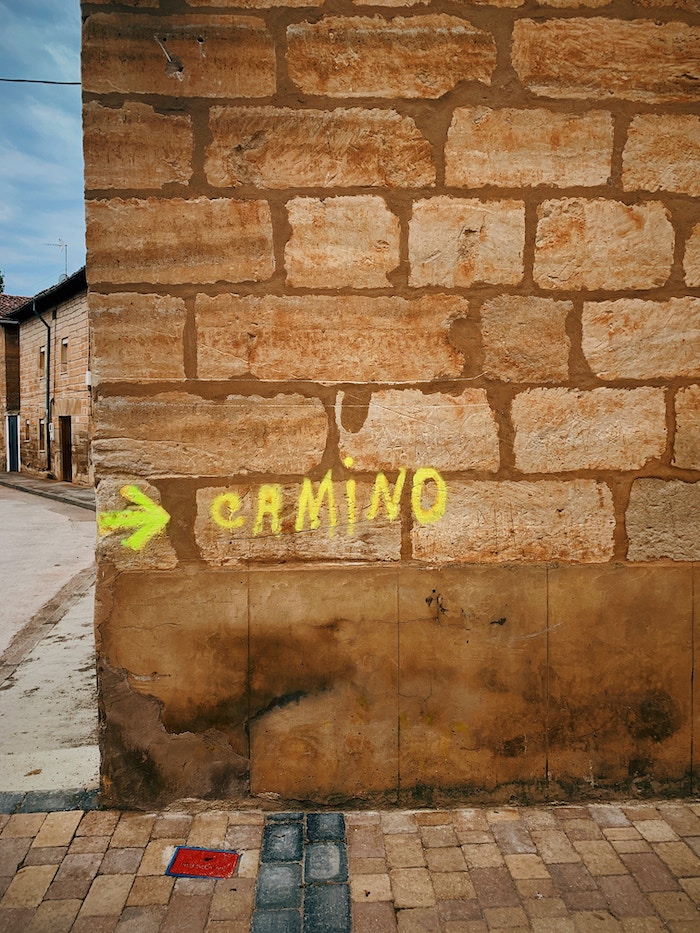I walked in the “Cuatro Calles” bar, and sat at our our usual table. The owner greeted me with a smile as I ordered a bucket of beers to share with everyone. My co-workers were going to be joining me soon. It was just another Wednesday lunch break. The beers came with patatas bravas, a dish prepared differently according to the restaurant’s style (always incredibly satisfying). I was basically eating potatoes covered in a spicy sauce, yet it was my favorite thing on the menu. Flamenco music played in the background while I wrote in my journal. I did not want to forget a thing about my life in Madrid.
Minutes later, my co-workers joined. We cheered and ordered more food. We did not have to be back at work for another 2 hours, so having a beer or a glass of wine was a perfectly reasonable thing to do. Actually, having a meal without wine or beer complementing it was the exception here. The conversation was lively, and we played a few card games. Meanwhile, the bread and potatoes sat heavy in my stomach, making me sleepy. So I ordered an espresso, which I sipped in the second hour of our break. It took me some time, but eventually I caught on to the Spaniard’s moderation rule when it comes to food and drinks. The servings are a lot smaller than in the United States.

When I first moved to Madrid, working as a Language and Culture Assistant, I was astounded to find out about the 2-hour lunch break. “What am I going to do in all that time?!” I thought. To me, it was a waste as I worked in a small town that was a one-hour bus ride from Madrid. The first few months, I tried filling up the empty block of time in my day with blogging, reading, social media, phone calls, and naps. Those two hours exhausted me more than the entire work day. Until I settled into the culture a little more, and embraced my exuberant 2-hour break. I noticed other Americans struggled with this, too. Filling up empty hours with “busy work” seemed to be in our DNA.
My expat co-workers and I made a point to go out to the town’s bar once or twice a week for lunch. Just to clarify, bars in Spain are like cafeterias with alcohol. The food is usually homemade, delicious, and well-priced. When we did not go to the bar, we took a short hike to the top of a nearby hill, and had lunch overlooking the city skyline. The weekends also began to revolve around food. Going out with my friends meant exploring the markets during the day, and the bars and restaurants at night. We often ordered several tapas so everyone got a taste of everything.
Up until I moved to Spain, food was a chore to me. Cooking was a dreaded task that always ended up in smoke and a burnt pan. Eating meant packing up something to go, and chewing it down quickly in the car on my way to work. Even if I had an hour lunch break, I always ate in a span of 15 to 20 minutes max. I cannot even remember what I used to have for lunch when I worked in the U.S. But in Spain, most meals were memorable.

One of my favorite dishes I ever had was the Galician pimientos de padrón. When I bit into a pimiento for the first time, I could taste each ingredient: olive oil, sea salt, and the pimiento itself. Each ingredient stood in my palate. Next thing you know, you are recreating the three ingredient rule in your own kitchen! Spain is probably better known for its wine than its cuisine. But the culture around food is something that completely changed the way I eat and the way I cook.
When going out with friends, serving a glass of red wine with good quality olives was enough. A plate of mushrooms and potatoes was enough. Even bread and olive oil was often a delicacy. “Always buy picual.” A Spaniard man in his 50s told me once. “It’s the best olive, so when you buy olive oil, make sure it’s picual.” Spanish cuisine is simple, but every ingredient matters. I began to notice a change in me when after 6 months since arriving in Madrid I decided to spend a December evening eating a dish of olives, tomatoes, and bread. That was my dinner, accompanied by small glass of red wine. Nothing pretentious, but each ingredient was local and of highest quality available.
During my two years in Madrid, I learned that eating is not just something to sustain our bodies and stay alive. It can be an art form, too. I love arranging simple dishes in a beautiful manner thanks to Spain. I love sharing food from my plate thanks to Spain. There is beauty and generosity in the way Spaniards cook and eat. I could not help myself but join them, and bring a piece of that back to my life in the United States and now Mexico.
In the two years I lived in Madrid, I could probably count with one hand all the times I had my coffee to go. Sitting down to enjoy a pick-me-up espresso in the middle of the day (even if I was alone), and sipping from a small and white ceramic mug… I still remember those moments vividly. Like a well made tapas dish, the ingredients, the people, and the moment matter. These things are everything. To this day, living outside of Spain, I enjoy each meal and the company one bite at a time.

Also by Vanessa: How To Boost Wellness & Flourish With A Gratitude Journal
6 Hacks To Packing Lighter, Whether You’re Moving Countries Or Going On Vacation
Get more like this—Sign up for our daily inspirational newsletter for exclusive content!
__
Photo: Vanessa Lynn Uzcategui; Sarah Kelly




